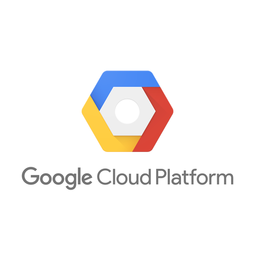Google Cloud Launches AI-powered Solutions to Safely Accelerate Drug Discovery and Precision Medicine

公司规模
Large Corporate
国家
- United States
产品
- Target and Lead Identification Suite
- Multiomics Suite
- Vertex AI
- Google Cloud Storage
- BigQuery
技术栈
- AlphaFold2
- NVIDIA's Parabricks
- Google's DeepVariant
- Compute Engine
- Looker
实施规模
- Enterprise-wide Deployment
影响指标
- Digital Expertise
- Innovation Output
- Productivity Improvements
技术
- 分析与建模 - 机器学习
- 分析与建模 - 预测分析
- 平台即服务 (PaaS) - 数据管理平台
适用行业
- 生命科学
- 药品
- 医疗保健和医院
适用功能
- 产品研发
- 质量保证
用例
- 数字孪生
- 预测性维护
- 远程资产管理
服务
- 云规划/设计/实施服务
- 数据科学服务
- 系统集成
关于客户
Cerevel, Colossal Biosciences, and Pfizer are prominent players in the pharmaceutical and biotech industries, each with a unique focus on advancing drug discovery and precision medicine. Cerevel is known for its work in neuroscience, aiming to develop treatments for neurological and psychiatric disorders. Colossal Biosciences, on the other hand, is a cutting-edge biotech company focused on de-extinction and genetic engineering, leveraging advanced genomic technologies to bring back extinct species and enhance biodiversity. Pfizer, a global pharmaceutical giant, is renowned for its extensive portfolio of medicines and vaccines, with a strong emphasis on research and development to address a wide range of health challenges. These companies are at the forefront of innovation, utilizing AI-powered solutions from Google Cloud to accelerate drug discovery processes and enhance precision medicine capabilities. By adopting these advanced technologies, they aim to streamline research, reduce development timelines, and ultimately bring novel therapeutics to market more efficiently.
挑战
Speeding up target and lead identification is critical for the race to drug discovery. Currently, developing a new drug from an original idea to the launch of a finished product is a complex process that can take 12–15 years and cost more than $1 billion, according to the British Journal of Pharmacology. In addition, identifying a biological target involved in the disease that is viable for drug intervention can take up to 12 months (NIH, National Center for Biotechnology Information). At the same time, most companies use X-ray crystallography and nuclear magnetic resonance (NMR) to determine protein 3D structures, but this has a high ratio of failures. Finally, once the drug discovery process is underway, it's not easy to scale supporting technology up or down based on demand.
解决方案
Google Cloud's Target and Lead Identification Suite enables biopharma companies to bring therapeutics to market faster by enabling more efficient in silico drug design. Its target identification will help companies quickly predict antibody structures, assess the structure and function of amino acid mutagenesis, and accelerate de novo protein design. This solution also enables lead optimization that can be used to discover novel, high-quality candidates at low cost for Quantitative Structure Activity Relationship (QSAR) studies or for Free Energy Perturbation (FEP) calculations. The Target and Lead Identification Suite includes data ingestion, target identification using AlphaFold2 and Vertex AI pipelines, and lead identification with cost-effective high-performance computing resources. The Multiomics Suite advances precision medicine care by transforming multiomics data into insights to advance scientific discoveries. Organizations can use this solution to streamline and accelerate analysis of genomic data, design clinical genomics, accelerate personalized medicine, and interpret genomic data to unlock new discoveries. The solution also provides structure and processes for researchers and data scientists to collaborate, saving time on developing net new paths, algorithms, or methods. What sets the Multiomics Suite apart is that it is cloud agnostic, allowing organizations to leverage existing investments in multiomics in a simplified environment. It also offers complete traceability through Vertex AI, so customers can organize millions of artifacts in their cloud environments.
运营影响
数量效益

Case Study missing?
Start adding your own!
Register with your work email and create a new case study profile for your business.
相关案例.

Case Study
Case Study: Pfizer
Pfizer’s high-performance computing software and systems for worldwide research and development support large-scale data analysis, research projects, clinical analytics, and modeling. Pfizer’s computing services are used across the spectrum of research and development efforts, from the deep biological understanding of disease to the design of safe, efficacious therapeutic agents.

Case Study
Hospital Inventory Management
The hospital supply chain team is responsible for ensuring that the right medical supplies are readily available to clinicians when and where needed, and to do so in the most efficient manner possible. However, many of the systems and processes in use at the cancer center for supply chain management were not best suited to support these goals. Barcoding technology, a commonly used method for inventory management of medical supplies, is labor intensive, time consuming, does not provide real-time visibility into inventory levels and can be prone to error. Consequently, the lack of accurate and real-time visibility into inventory levels across multiple supply rooms in multiple hospital facilities creates additional inefficiency in the system causing over-ordering, hoarding, and wasted supplies. Other sources of waste and cost were also identified as candidates for improvement. Existing systems and processes did not provide adequate security for high-cost inventory within the hospital, which was another driver of cost. A lack of visibility into expiration dates for supplies resulted in supplies being wasted due to past expiry dates. Storage of supplies was also a key consideration given the location of the cancer center’s facilities in a dense urban setting, where space is always at a premium. In order to address the challenges outlined above, the hospital sought a solution that would provide real-time inventory information with high levels of accuracy, reduce the level of manual effort required and enable data driven decision making to ensure that the right supplies were readily available to clinicians in the right location at the right time.

Case Study
Gas Pipeline Monitoring System for Hospitals
This system integrator focuses on providing centralized gas pipeline monitoring systems for hospitals. The service they provide makes it possible for hospitals to reduce both maintenance and labor costs. Since hospitals may not have an existing network suitable for this type of system, GPRS communication provides an easy and ready-to-use solution for remote, distributed monitoring systems System Requirements - GPRS communication - Seamless connection with SCADA software - Simple, front-end control capability - Expandable I/O channels - Combine AI, DI, and DO channels

Case Study
Driving Digital Transformations for Vitro Diagnostic Medical Devices
Diagnostic devices play a vital role in helping to improve healthcare delivery. In fact, an estimated 60 percent of the world’s medical decisions are made with support from in vitrodiagnostics (IVD) solutions, such as those provided by Roche Diagnostics, an industry leader. As the demand for medical diagnostic services grows rapidly in hospitals and clinics across China, so does the market for IVD solutions. In addition, the typically high cost of these diagnostic devices means that comprehensive post-sales services are needed. Wanteed to improve three portions of thr IVD:1. Remotely monitor and manage IVD devices as fixed assets.2. Optimizing device availability with predictive maintenance.3. Recommending the best IVD solution for a customer’s needs.

Case Study
Fusion Middleware Integration on Cloud for Pharma Major
Customer wanted a real-time, seamless, cloud based integration between the existing on premise and cloud based application using SOA technology on Oracle Fusion Middleware Platform, a Contingent Worker Solution to collect, track, manage and report information for on-boarding, maintenance and off-boarding of contingent workers using a streamlined and Integrated business process, and streamlining of integration to the back-end systems and multiple SaaS applications.







